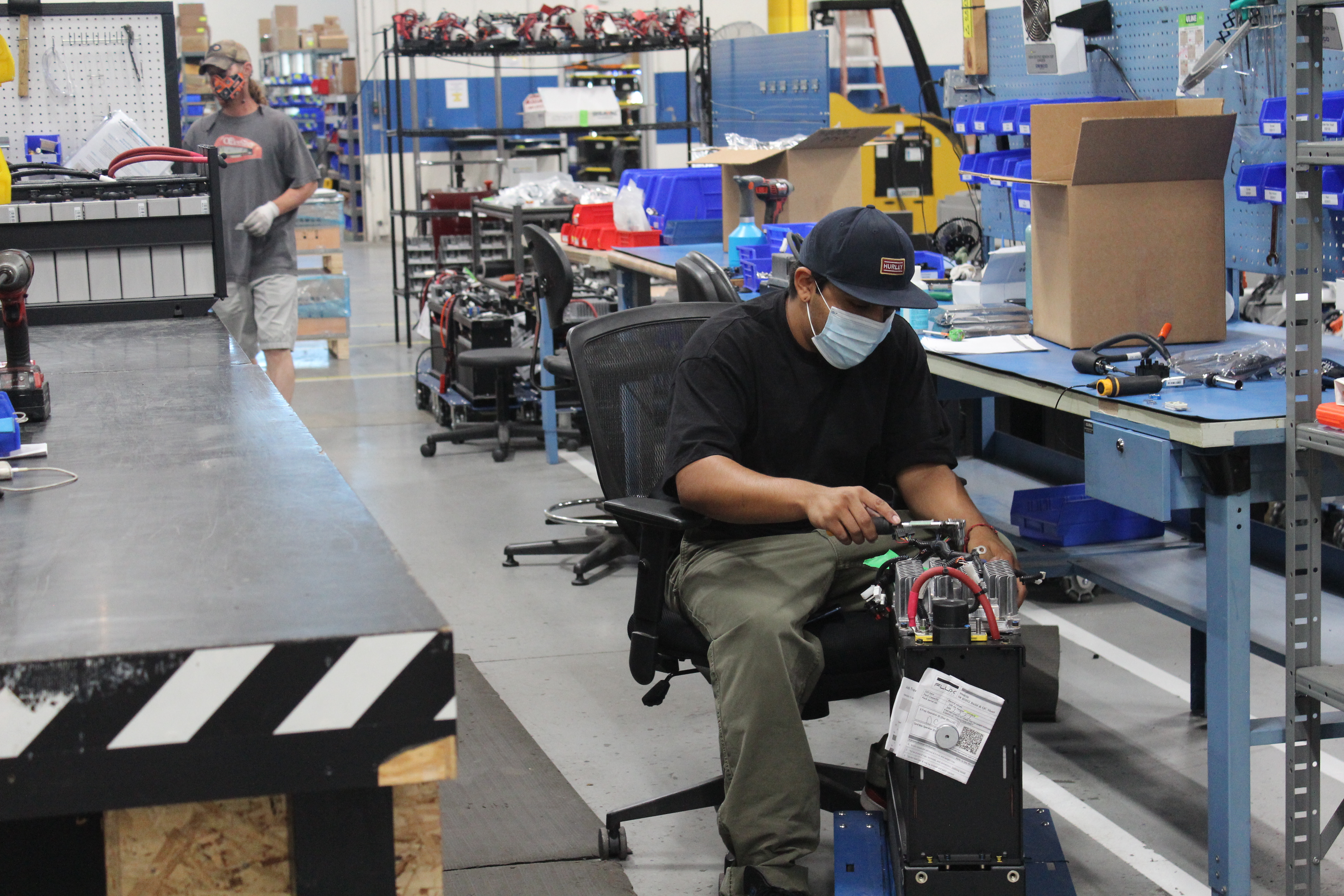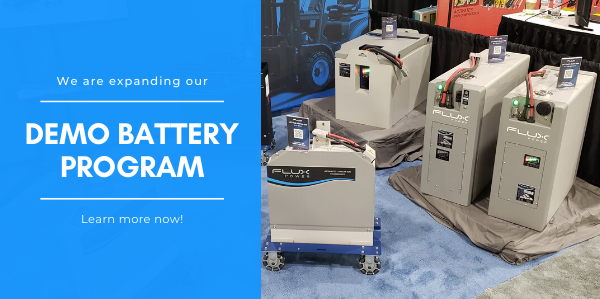What is a Battery Management System (BMS)?
A battery management system (BMS) is essentially the “brain” of the lithium-ion battery pack, monitoring the whole system for performance data about the battery and tracking potential safety hazards or service issues.
An advanced BMS can gather battery pack performance data and provide that data through telemetry via a web portal customized for each fleet. The insights provided by the BMS help users optimize their entire operation for efficiency.
2020 Material Handling Trends: Telematics are a Must
Throughout the material handling industry, a major focus is on improving labor efficiency and productivity via telematics solutions that tie into a fleet management system.
Telematics are becoming a must-have, rather than a nice-to-have as the technology becomes more affordable. Because of lithium-ion technology is more advanced than lead acid, it makes telematics system a natural fit for forklifts.
As lithium-ion battery technology becomes more accessible and affordable, it fits right in with the overall push towards operational efficiency. The capabilities of a BMS allow warehouse managers to use their battery data in conjunction with a telematics system, to maximize equipment uptime in warehouse settings.
There are primarily four ways that a BMS can streamline operations for material handling companies:
- Helping to maintain battery temperature in the ideal operating range
- Monitoring charge currents and voltage to prevent overcharging
- Monitoring cell balancing and eliminating the need for equalizing charges
- Tracking battery state of health
Helps Maintain Battery Temperature in the Ideal Operating Range
Lithium-ion batteries have specific needs as far as their operating temperature to maximize their lifespan and ensure safety.
Lithium-ion batteries should be charged at a range of 32 ° F to 113 ° F, and discharged between -4 ° F to 140 ° F.
Exposure to excessively high temperatures can cause cathode electrolyte oxidation, which can result in a sudden loss of capacity, decreasing the battery’s lifespan. The longer a lithium-ion battery is run at high temperatures, the more unstable its internal chemical reaction becomes.
If the battery temperature is below freezing when charging a lithium-ion battery, it will cause permanent solid electrolyte interphase (SEI) build-up on the anode, which also damages the battery.
The BMS on a lithium-ion battery pack maintains the cell temperature within that ideal operating range to prevent overheating or freezing and notify the user if the operating temperature is exceeded.
Monitors Charge Currents & Voltage to Prevent Overcharging
When charging a lithium-ion battery, keeping the current controlled at a moderate level helps improve the battery’s lifespan and efficiency.
Paulus Geantil, Flux Power’s CTO, explains that “charging at high current can increase the build-up of lithium atoms on the surface of the graphite anode and cathode, which in some cases can lead to thermal runaway. If the charge current is too low, the battery’s capacity is not replaced quickly enough.”
Lithium-ion forklift batteries offer a unique advantage over lead acid batteries in the fact that they can be opportunity charged in between shifts or during lunch breaks.
The shorter charging times for lithium-ion batteries and the fact that they don’t require a cool down period make this process much more effective when applied to multi-shift operations.
Additionally, lithium-ion batteries are typically plugged right into the charger from the forklift, eliminating the need to use specialized equipment to remove the battery from the forklift and place it in a separate charging room.
Opportunity charging allows for decentralized charge stations throughout the warehouse, and eliminates mid-shift battery swaps, making this a huge step towards improving overall productivity and streamlining operations within the warehouse.
Monitors Cell Balancing & Eliminates the Need for Equalizing Charges
Battery balancing is a technique that improves the lifespan and capacity of a battery pack. When there are multiple cells in a battery pack, they can often differ in capacities and self-discharge rates, which can lead to variation in their state of charge. Balancing the pack helps bring all the cells to an equivalent state of charge which maximizes the lifespan and usable capacity of the battery pack.
Lead acid batteries are balanced using an equalizing charge, which is a deliberate overcharge that removes sulfate crystals that build up on the plates over time. Due to the venting of gasses that occurs when lead acid batteries are charged, this process must be carefully monitored and performed in a room with excellent ventilation.
“Lithium-ion batteries can be actively balanced using their BMS, which monitors the individual cells for temperature and voltage and redistributes excess energy from cells with higher capacity to those with a lower capacity,” stated Geantil. “It can also compensate for the differences in self discharge rates which act to imbalance a battery pack”.
This active, automatic process is a huge advantage over the cumbersome and potentially dangerous practice of equalizing charges for lead acid batteries. The 16 hour long equalizing charge must be done at least once every few months and is typically performed as often as once a week for 16 hours.
Tracks Battery State of Health
A battery’s state of health (SoH) is a data point within a BMS that measures the battery’s condition in percentage points - so it typically starts out at 100% and decreases with time and use.
All BMS are different depending on their manufacturer, but they measure some combination of differently weighted parameters like:
- Internal resistance
- Capacity
- Voltage
- Self-discharge
- Age
- Number of cycles
- Temperature
- Ability to accept a charge
This data allows managers to track long term changes in the battery, making them aware of any potential problems and plan for replacement when needed.
The BMS should be able to send this data to cloud-based services, which is helpful when examined in the context of an overarching telematics solution. This allows fleet managers to make informed decisions about their annual budget and perform predictive maintenance.
Forklift Batteries as a Technology Investment
Many warehouse, plant and distribution center managers are still using their battery data at a high level and are not diving deep into the details to use the technology to its fullest potential.
The BMS can trigger automatic, location-specific notifications about batteries that need charging, allowing managers to take advantage of natural breaks for charging, enable charger sequencing, and streamline operations.
Using BMS data in conjunction with a telematics system to inform decision making on fleet management will enable managers to save money in the long run.
These data capabilities combined with the improved performance that lithium-ion batteries create make them an attractive investment and help streamline operations in the materials handling world.












